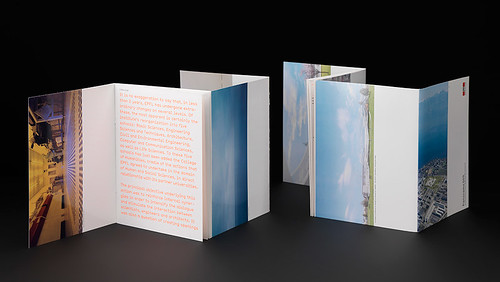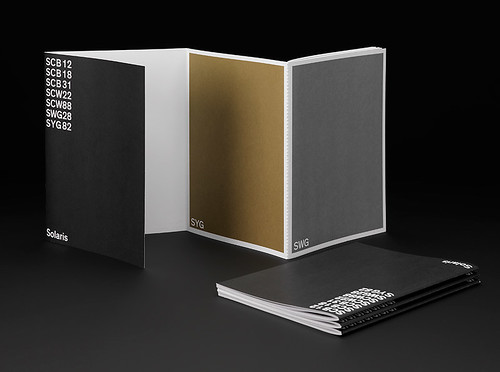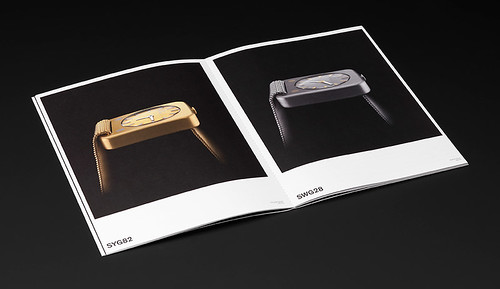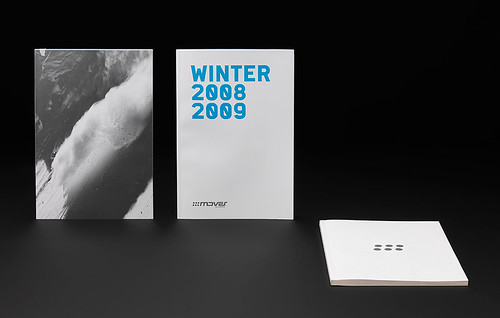Friday, 9:00am
14 November 2014
David Rust 1969-2014
A tribute to the life and innovative work of Swiss graphic designer David Rust, of Gavillet & Rust. By François Rappo

David Rust has died at the age of 45, writes François Rappo. He was one of the most brilliant members of a generation of graphic artists who have completely revitalised the landscape of Swiss visual communication over the past twenty years.
Ecole polytechnique fédérale de Lausanne (EPFL) annual report, 2002, featuring photographs by Armin Linke. Art direction and design by Gavillet & Rust.
Top: poster for ‘Unterirdisch – Das Spektakel des Unsichtbaren’ [‘Underground – The Spectacle of the Invisible’], Museum für Gestaltung Zürich. Design: Gavillet & Rust.

Young designers who, like Rust, were in their twenties during the 1990s have left a permanent mark on this landscape, which was rich in strong traditions, paving the way for digital culture, experimentation and innovation. They were able to express new attitudes, propose completely new modes of interaction and interplay between the graphic designer, the agent of communication, and the public. In the process they were instrumental in helping define a new style. Rust expressed this mood not only by creating images but also in his typographic work. He was from the generation that was almost ‘digital native’, the first generation to embrace the full potential offered by the digital revolution to visual creativity and design.
Stencil typeface Cargo designed by Gilles Gavillet and David Rust, 2003, available from Optimo. See ‘A tradition with breaks’ in Eye 86.

Identity for Jay-Z’s company Roc Nation, on a T-shirt worn by Kylie Minogue, which uses an adapted version of Optimo’s Cargo.

He was born in Bienne in 1969. In 1998 Rust, together with Gilles Gavillet and Stéphane Delgado, came up with the prototype for the online type foundry Optimo. He was still a student of graphic design at ECAL. The new foundry was the first of its kind in Switzerland. The project was to pave the way for a new, post-industrial era in typographic development. In this important area of Swiss graphic creativity Rust was able to combine tradition, which he expressed with clarity, precision and efficacy, with an openness to the emerging technological and urban cultures, drawing inspiration from the world of fashion, music and contemporary art.
Catalogue for the Solaris watch by Ikepod, Geneva. Photography by Olivier Pasqual. Art direction, graphic and web design by Gavillet & Rust.

Catalogue for the Solaris watch by Ikepod, Geneva. Photography by Olivier Pasqual. Art direction, graphic and web design by Gavillet & Rust.

From 2001 onwards, as a principal of the Gavillet & Rust studio, Rust was to develop a holistic approach to graphic design, encompassing art direction, photography, sound and typography. It was in this spirit that Gavillet & Rust created the visual identity and communication for prominent institutions in the art world in Switzerland and (Art Basel, Museum für Gestaltung in Zurich, Kunsthalle in Berne) and beyond (Guggenheim Museum in New York). In addition to this, Rust worked in a personal capacity on projects for EPFL, Ikepod watches for Marc Newson, for the Mover brand and for the social network Urturn.
Catalogue for high-end ski clothing company Mover, 2008. Art direction, graphic and web design by Gavillet & Rust.

His work was quickly noticed, and won awards in a demanding and competitive field. Rust was part of a small circle of people who created a new mood within Swiss graphic design during the early years of the 21st century.
It is in this field – in which Switzerland has acquired a reputation for excellence and international innovation – that David Rust, in a short and brilliant career, seized the opportunity to express and realise his own vision and that of his generation.
David Rust. Portrait by Olivier Pasqual.
Translated by Deborah Burnstone
François Rappo, designer and writer, Lausanne
Eye is the world’s most beautiful and collectable graphic design journal, published quarterly for professional designers, students and anyone interested in critical, informed writing about graphic design and visual culture. It is available from all good design bookshops and online at the Eye shop, where you can buy subscriptions and single issues.

